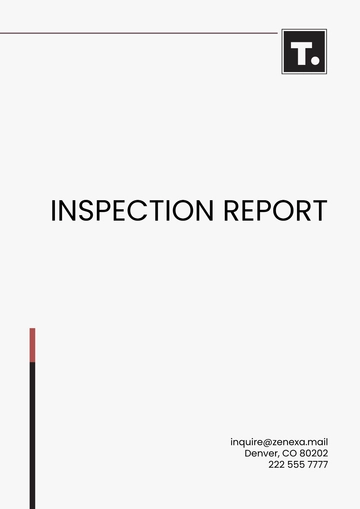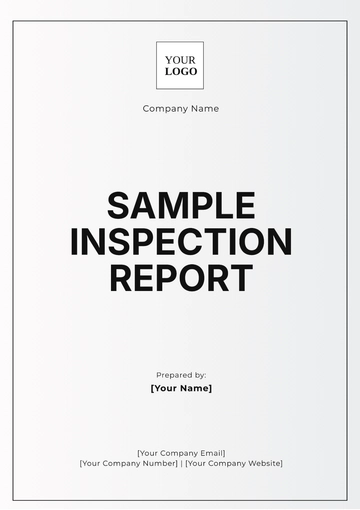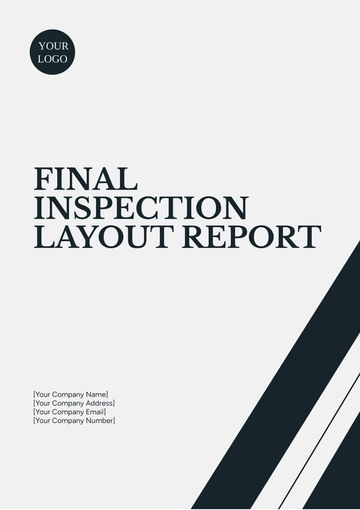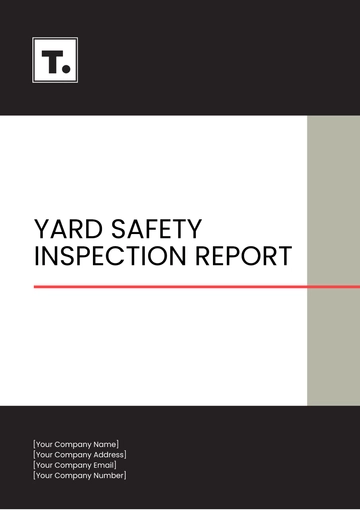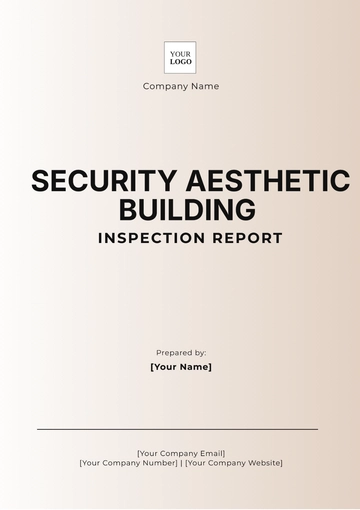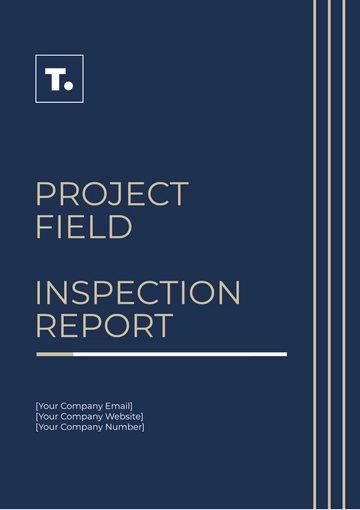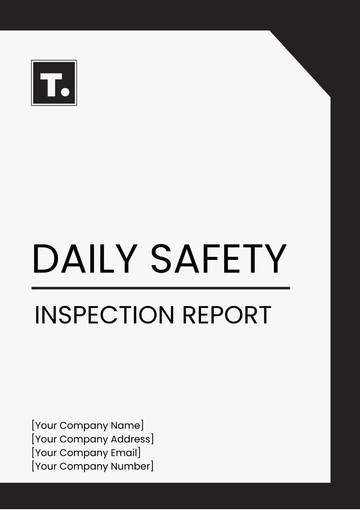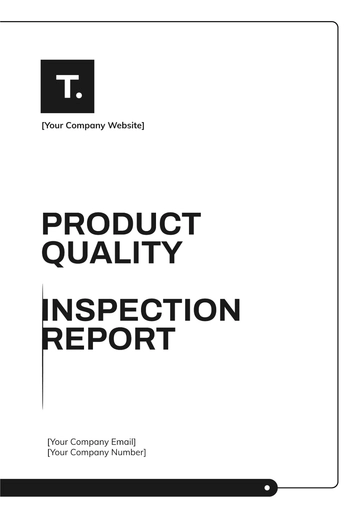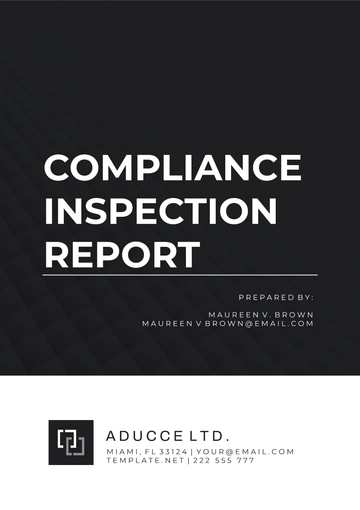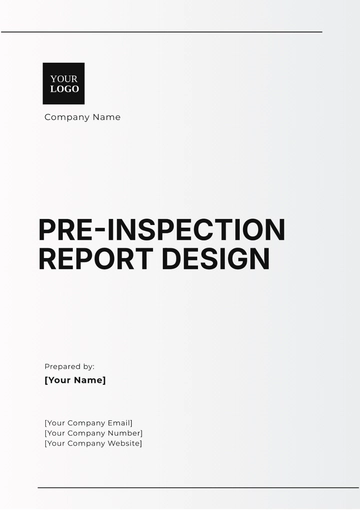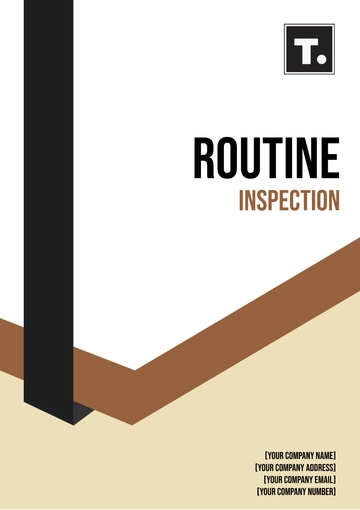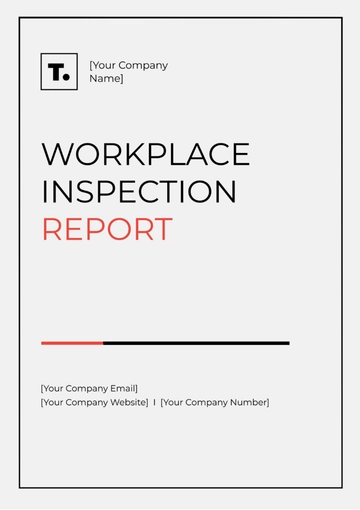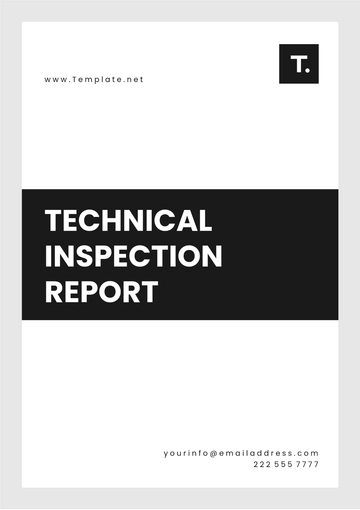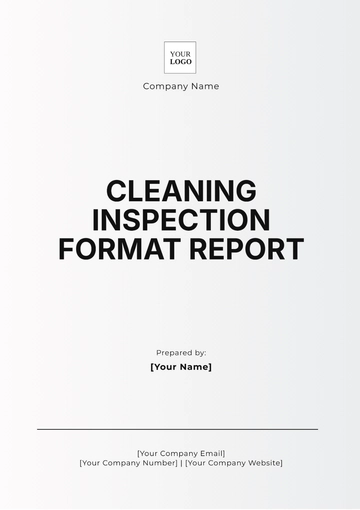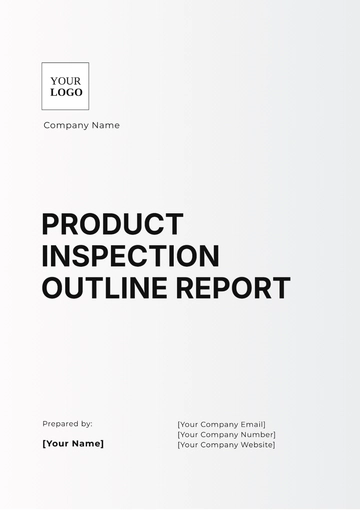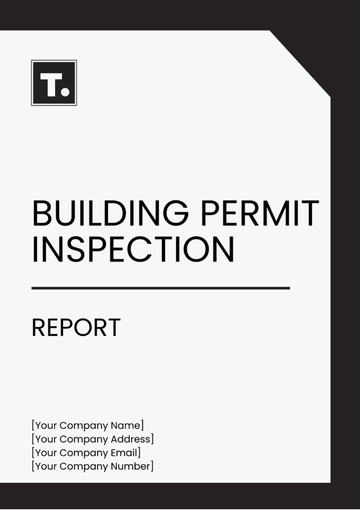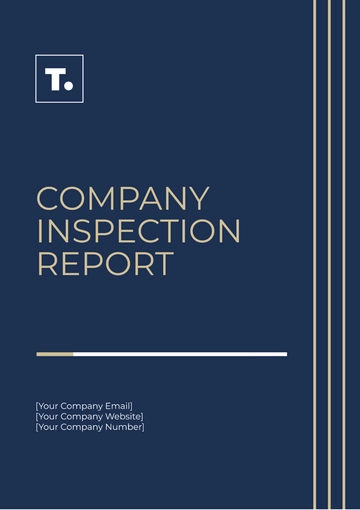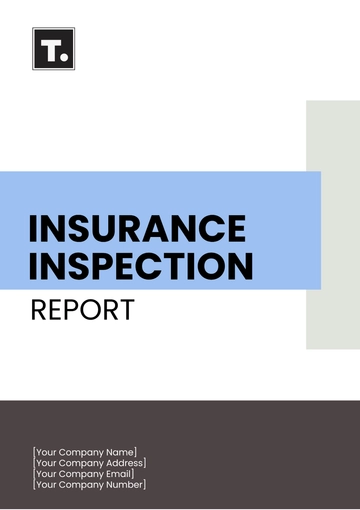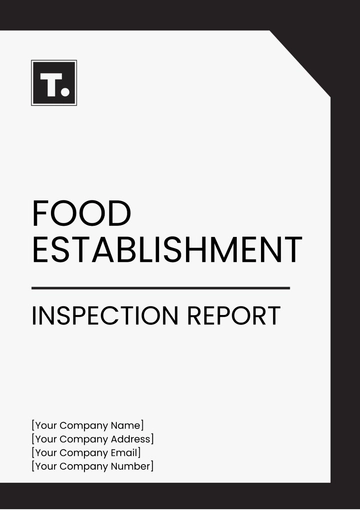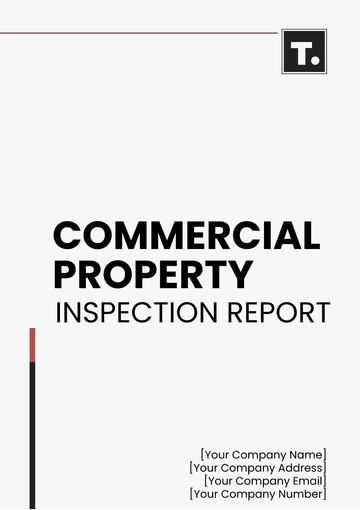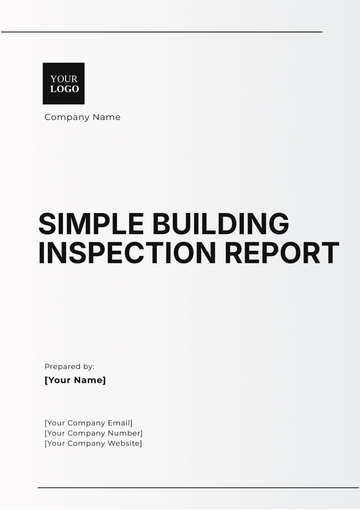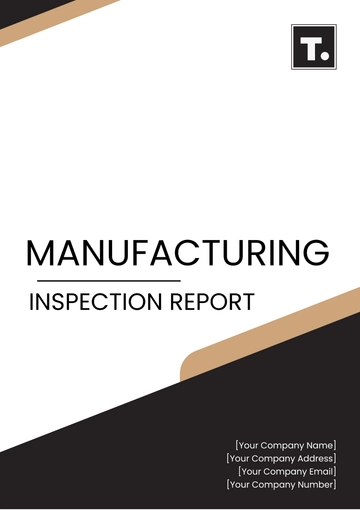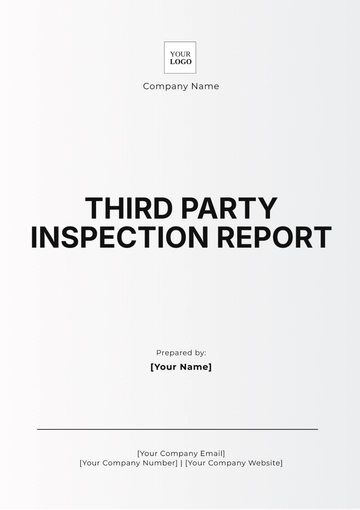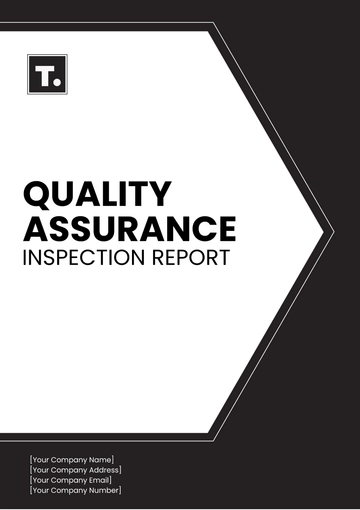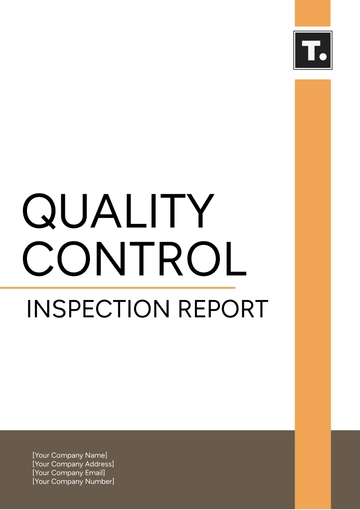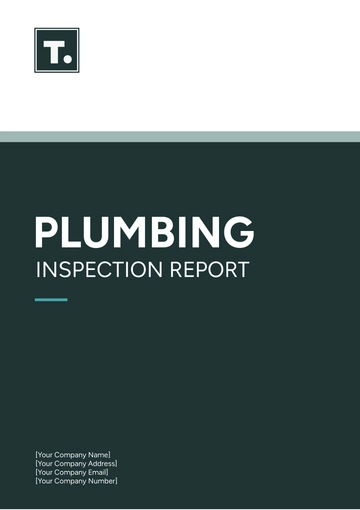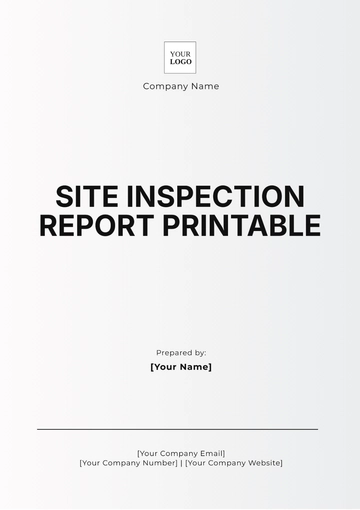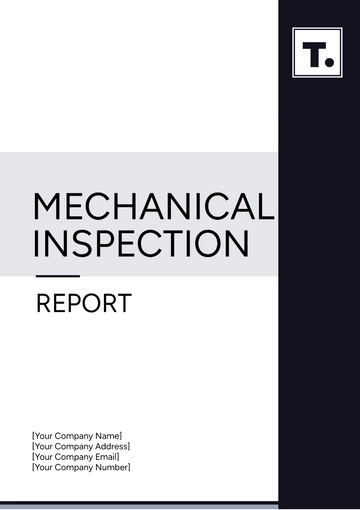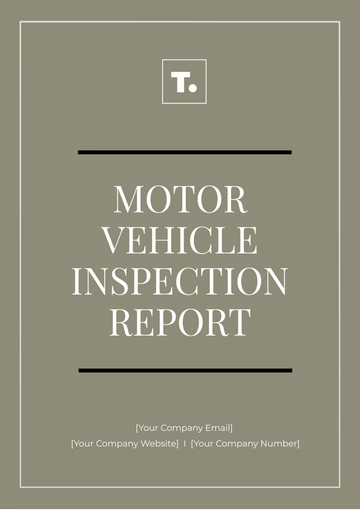Free Health Inspection Report
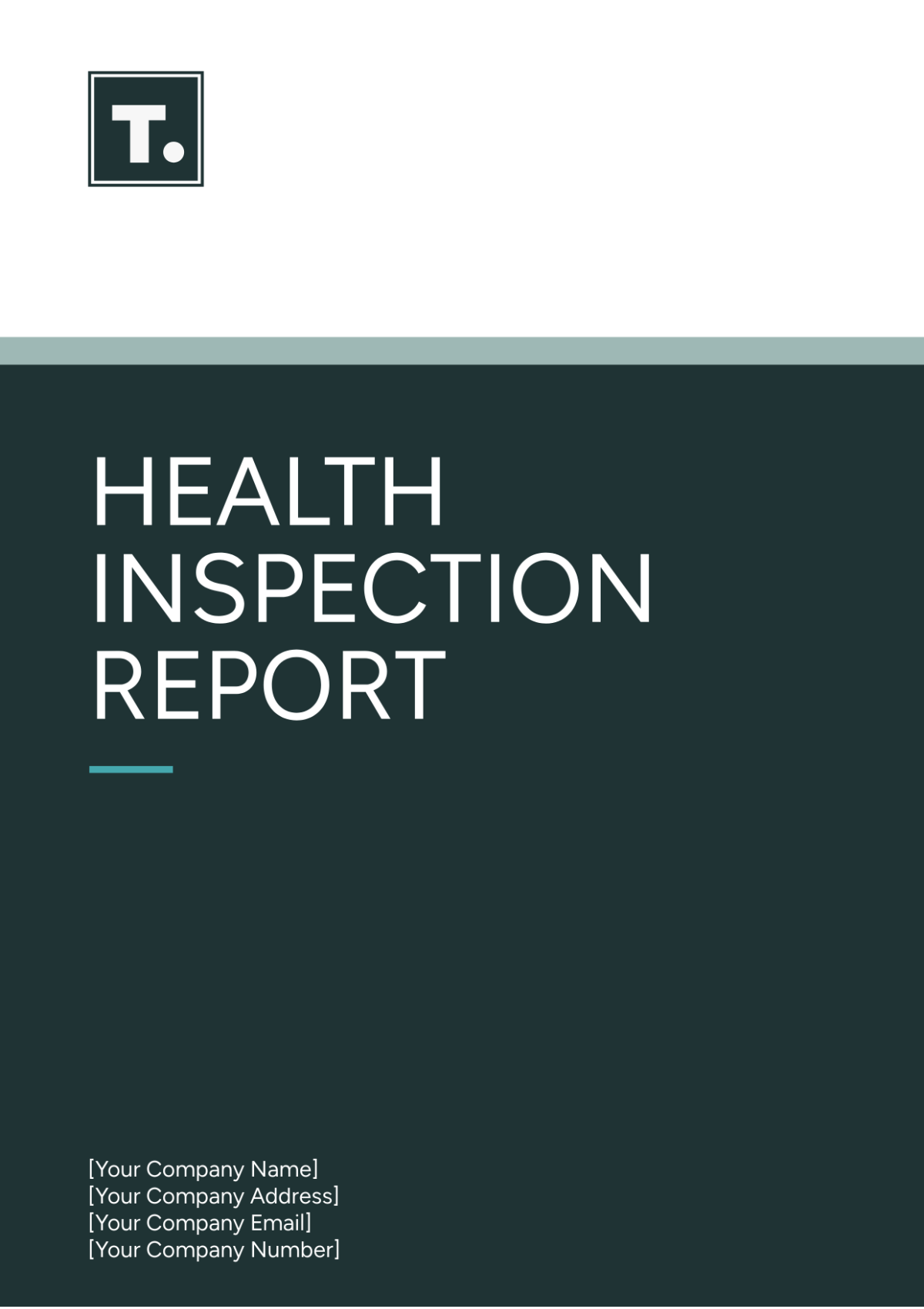
Prepared by: [Your Name]
I. Introduction
A. Purpose of Inspection
The purpose of this health inspection is to assess compliance with health and safety regulations at [Your Company Name]. The inspection aims to ensure that the establishment maintains proper hygiene practices, adheres to food safety guidelines, and provides a safe environment for its patrons.
B. Scope of Inspection
The inspection covers various critical areas essential for public health and safety:
Hygiene Practices: Evaluation of handwashing facilities, sanitation procedures, and staff hygiene practices.
Food Handling Procedures: Assessment of food storage, preparation methods, and prevention of cross-contamination.
Sanitation: Inspection of cleanliness standards in food preparation areas, dining spaces, and restroom facilities.
General Safety: Identification of potential hazards and compliance with safety protocols.
C. Inspection Details
Date of Inspection: June 15, 2054
Inspector: [Your Name]
Establishment Type: Restaurant and Cafe
II. Summary of Findings
A. Compliance with Regulations
The establishment is found to be compliant with food safety regulations in several key areas:
Proper Storage and Labeling: Perishable items are adequately stored and labeled, minimizing the risk of spoilage and contamination.
Handwashing Facilities: Handwashing stations with soap, hot water, and disposable towels are readily accessible to staff.
B. Non-Compliance Issues
Non-compliance issues were identified during the inspection:
Cross-Contamination Risks: Evidence of improper storage practices where raw meats were stored adjacent to ready-to-eat foods, posing a risk of cross-contamination.
Personal Hygiene Practices: Some kitchen staff were observed not wearing gloves during food preparation, potentially compromising food safety standards.
C. Overall Assessment
Overall, [Your Company Name] demonstrates a commitment to maintaining adequate food storage and sanitation practices. However, improvement is necessary in food handling procedures to ensure compliance with food safety regulations and minimize health risks to patrons.
III. Observations
Area Inspected | Observations |
|---|---|
Food Handling | Improper storage of raw meats next to ready-to-eat foods in the refrigerator. There is also a need for more frequent rotation of perishable items. |
Sanitation | There was evidence of grease buildup on cooking equipment and counters, indicating the need for more regular deep cleaning. |
Hygiene Practices | Lack of hair restraints among kitchen staff was noted, which is crucial for preventing hair contamination in food preparation areas. |
General Cleanliness | Floors in the kitchen area were observed to be wet and slippery, posing a slip and fall hazard to kitchen staff. |
Pest Control | No signs of pest activity were observed during the inspection, suggesting that the establishment has effective pest control measures in place. |
IV. Recommendations
Based on the findings of this inspection, the following recommendations are suggested to enhance food safety and compliance:
Implement Strict Food Storage Procedures: Develop and enforce policies to separate raw and ready-to-eat foods during storage to prevent cross-contamination.
Enhance Staff Training: Provide comprehensive training sessions for kitchen staff on proper food handling practices, including the use of gloves and hair restraints.
Enhance Cleaning Protocols: Establish a daily cleaning checklist to ensure thorough sanitation of kitchen surfaces, equipment, and floors.
V. Compliance Status
A. Immediate Actions Taken
Immediate actions have been taken to address critical issues identified during the inspection:
Reorganization of Food Storage: Immediate reorganization of food storage areas to separate raw and ready-to-eat foods to prevent cross-contamination.
Staff Training: Training sessions scheduled for all kitchen staff on proper food handling and hygiene practices.
B. Long-Term Compliance Plan
A long-term compliance plan is recommended to address remaining non-compliance issues and ensure ongoing adherence to health and safety standards:
Regular Monitoring and Training: Implement regular monitoring and refresher training sessions for staff on food safety protocols.
Enhanced Cleaning Regimen: Establish a schedule for deep cleaning of kitchen equipment and surfaces to maintain high standards of sanitation.
C. Follow-up Inspection
A follow-up inspection is scheduled on July 1, 2054, to verify the implementation of corrective actions and assess continued compliance with health and safety regulations.
VI. Conclusion
In conclusion, while [Your Company Name] demonstrates commendable efforts in maintaining cleanliness and some aspects of food safety, there is room for improvement in food handling practices and overall kitchen hygiene. By implementing the recommended actions and maintaining vigilance in compliance, the establishment can ensure a safer environment for its customers and uphold regulatory standards effectively.
- 100% Customizable, free editor
- Access 1 Million+ Templates, photo’s & graphics
- Download or share as a template
- Click and replace photos, graphics, text, backgrounds
- Resize, crop, AI write & more
- Access advanced editor
Streamline your health inspection reporting with the Health Inspection Report Template from Template.net. This fully customizable and editable template ensures comprehensive and professional results. Editable in our AI Editor Tool, it allows you to tailor every detail to meet your specific needs effortlessly. Simplify your inspection process with precision and ease today!
You may also like
- Sales Report
- Daily Report
- Project Report
- Business Report
- Weekly Report
- Incident Report
- Annual Report
- Report Layout
- Report Design
- Progress Report
- Marketing Report
- Company Report
- Monthly Report
- Audit Report
- Status Report
- School Report
- Reports Hr
- Management Report
- Project Status Report
- Handover Report
- Health And Safety Report
- Restaurant Report
- Construction Report
- Research Report
- Evaluation Report
- Investigation Report
- Employee Report
- Advertising Report
- Weekly Status Report
- Project Management Report
- Finance Report
- Service Report
- Technical Report
- Meeting Report
- Quarterly Report
- Inspection Report
- Medical Report
- Test Report
- Summary Report
- Inventory Report
- Valuation Report
- Operations Report
- Payroll Report
- Training Report
- Job Report
- Case Report
- Performance Report
- Board Report
- Internal Audit Report
- Student Report
- Monthly Management Report
- Small Business Report
- Accident Report
- Call Center Report
- Activity Report
- IT and Software Report
- Internship Report
- Visit Report
- Product Report
- Book Report
- Property Report
- Recruitment Report
- University Report
- Event Report
- SEO Report
- Conference Report
- Narrative Report
- Nursing Home Report
- Preschool Report
- Call Report
- Customer Report
- Employee Incident Report
- Accomplishment Report
- Social Media Report
- Work From Home Report
- Security Report
- Damage Report
- Quality Report
- Internal Report
- Nurse Report
- Real Estate Report
- Hotel Report
- Equipment Report
- Credit Report
- Field Report
- Non Profit Report
- Maintenance Report
- News Report
- Survey Report
- Executive Report
- Law Firm Report
- Advertising Agency Report
- Interior Design Report
- Travel Agency Report
- Stock Report
- Salon Report
- Bug Report
- Workplace Report
- Action Report
- Investor Report
- Cleaning Services Report
- Consulting Report
- Freelancer Report
- Site Visit Report
- Trip Report
- Classroom Observation Report
- Vehicle Report
- Final Report
- Software Report
